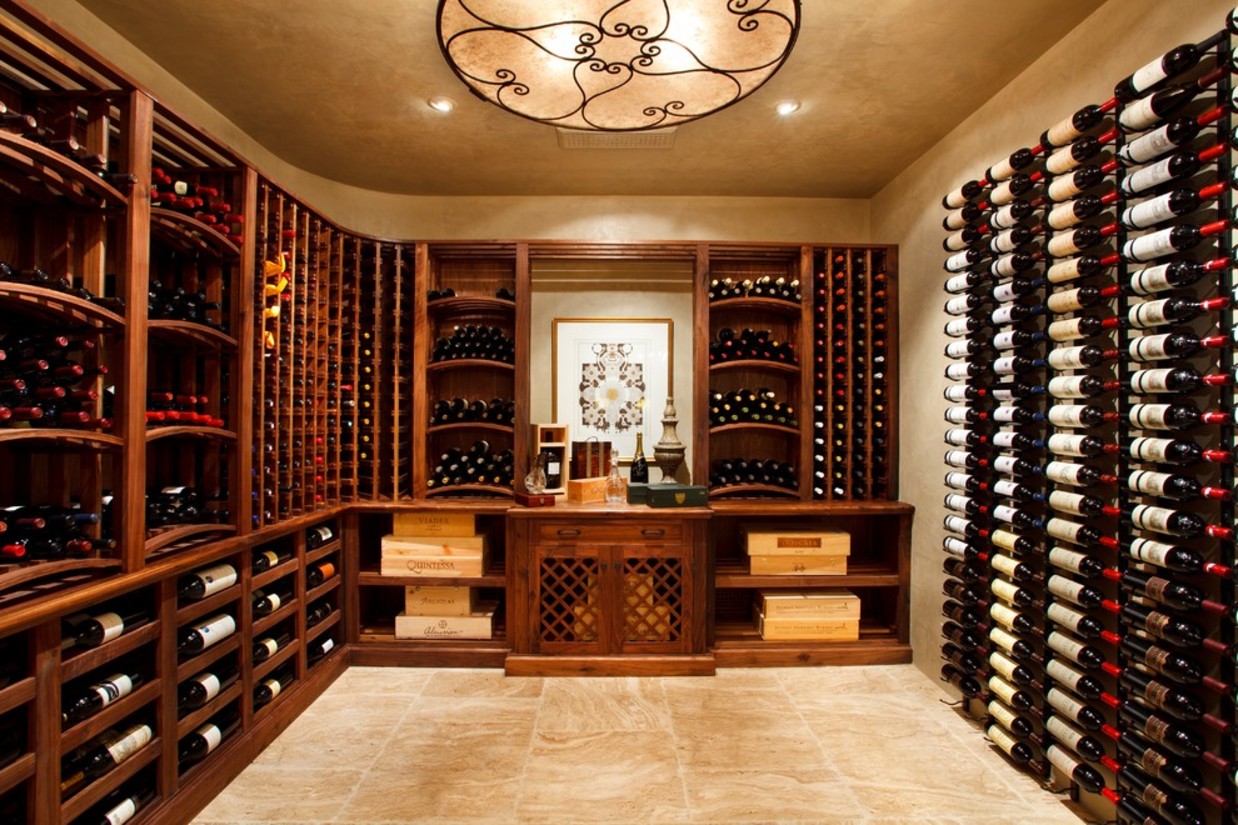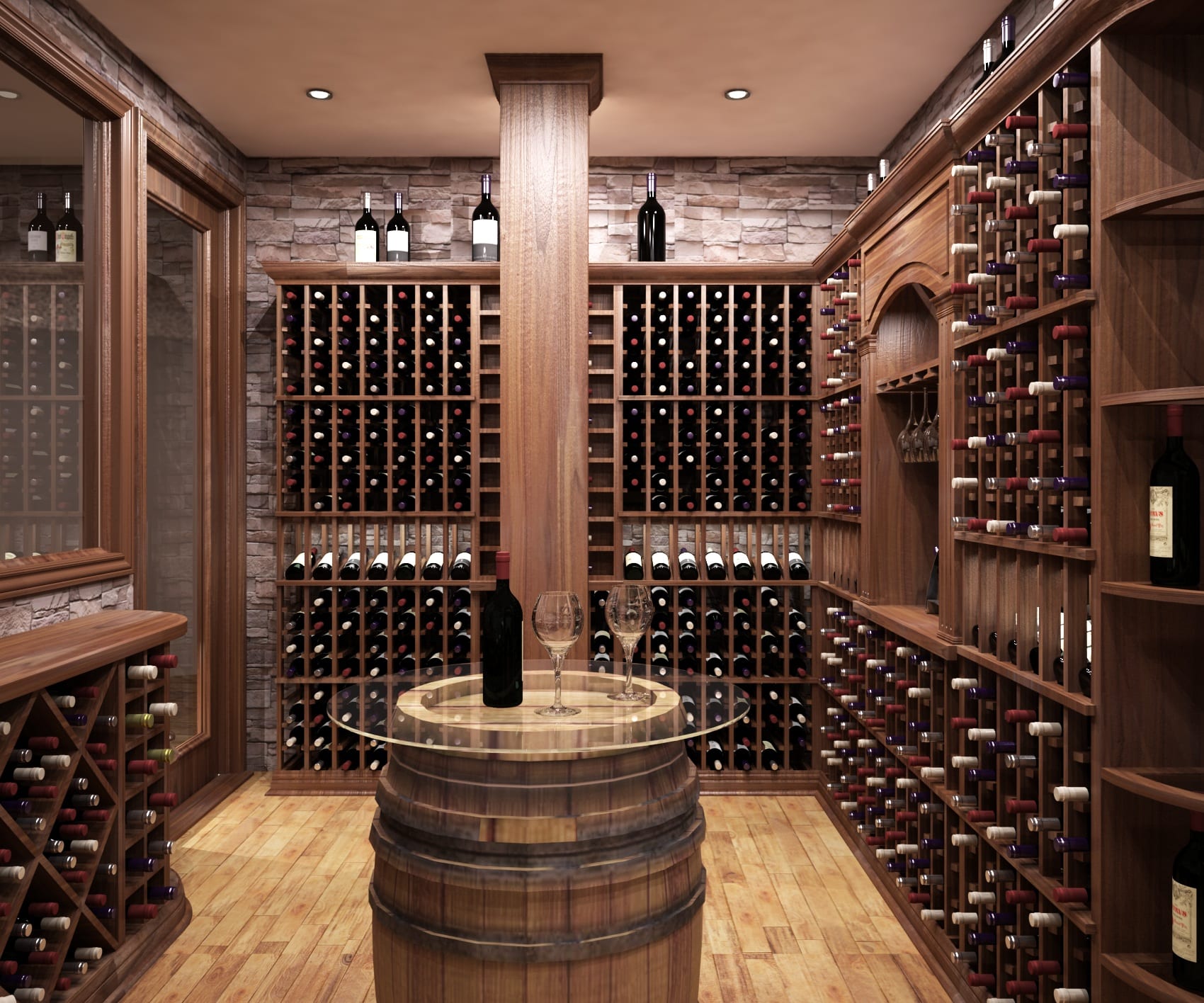Understanding Red Wine Storage Cabinets

Red wine, with its complex flavors and aromas, is a beloved beverage enjoyed by many. However, to truly appreciate the nuances of a fine wine, proper storage is crucial. Just as you wouldn’t leave a delicate piece of art exposed to the elements, you wouldn’t want to store your precious wines in a haphazard manner. This is where red wine storage cabinets come in, providing the ideal environment to preserve and enhance the quality of your collection.
Importance of Proper Red Wine Storage
Proper red wine storage is essential to ensure that the wine ages gracefully and maintains its quality over time. The ideal storage conditions for red wine are:
- Temperature: Consistent temperatures between 55°F and 65°F (13°C and 18°C). Fluctuations in temperature can cause the wine to expand and contract, potentially damaging the cork and affecting the wine’s integrity.
- Humidity: A relative humidity level of around 70%. This prevents the cork from drying out and becoming brittle, which can lead to oxidation and spoilage.
- Darkness: Wine should be stored in a dark environment to prevent light from damaging the wine. UV light, in particular, can cause the wine to oxidize and develop unpleasant flavors.
- Vibration: Minimal vibration is essential for optimal aging. Excessive vibration can disrupt the wine’s delicate sediment and negatively impact its taste.
Key Features of a Red Wine Storage Cabinet
Red wine storage cabinets are designed to provide the optimal conditions for storing wine. Key features to look for in a red wine storage cabinet include:
- Temperature Control: A high-quality wine storage cabinet will have a precise temperature control system that can maintain a consistent temperature within the ideal range for red wine storage. Some cabinets offer adjustable temperature settings, allowing you to customize the environment for different types of wine.
- Humidity Control: Humidity control is crucial for preventing the cork from drying out. Look for a cabinet with a built-in humidifier that can maintain a relative humidity level of around 70%.
- Vibration Reduction: Wine storage cabinets should be designed to minimize vibration. This can be achieved through features like vibration-dampening materials and a robust construction.
- UV Protection: The cabinet should be made of materials that block UV light, such as tinted glass or solid wood. Some cabinets even have built-in UV filters to provide extra protection.
- Shelving and Storage Capacity: Consider the size of your wine collection and choose a cabinet with enough shelving to accommodate your needs. Some cabinets have adjustable shelves to accommodate different bottle sizes.
Types of Red Wine Storage Cabinets
There are several types of red wine storage cabinets available in the market, each with its own set of features and price points:
- Under-Counter Wine Cabinets: These cabinets are designed to fit under kitchen counters, maximizing space in a compact way. They typically have a smaller capacity but offer a convenient and stylish solution for storing a modest collection.
- Freestanding Wine Cabinets: These cabinets stand independently and come in various sizes, from small units for a few bottles to large cabinets that can hold hundreds of bottles. They offer flexibility in placement and can be incorporated into any room.
- Built-in Wine Cabinets: These cabinets are designed to be integrated into kitchen cabinets or other built-in cabinetry. They provide a seamless and integrated look and are ideal for larger collections.
- Wine Coolers: Wine coolers are a more affordable option for storing wine. They typically have a smaller capacity and may not offer the same level of temperature and humidity control as dedicated wine storage cabinets. However, they are a good choice for those who are just starting a wine collection or who need a simple solution for storing a few bottles.
Choosing the Right Red Wine Storage Cabinet

Choosing the right red wine storage cabinet can be a daunting task, given the wide variety of options available. However, by understanding your needs and considering key features, you can make an informed decision and find the perfect cabinet for your wine collection.
Size and Capacity
The size and capacity of your wine storage cabinet should align with your current and future needs. Consider the following factors:
- Number of bottles: Determine the number of bottles you currently own and anticipate owning in the future. Cabinets come in various sizes, from small units holding a few bottles to large units holding hundreds.
- Bottle size: Standard Bordeaux bottles are the most common, but some cabinets can accommodate larger bottles, such as magnums or double magnums.
- Storage space: Measure the available space in your home to ensure the cabinet fits comfortably and doesn’t obstruct movement or access to other items.
Temperature and Humidity
Red wine needs to be stored at a consistent temperature and humidity level to preserve its quality. Here are the key factors to consider:
- Temperature range: The ideal temperature range for red wine storage is between 55°F and 65°F (13°C and 18°C). Cabinets with digital temperature controls allow for precise adjustments to maintain the desired temperature.
- Humidity levels: The ideal humidity level for red wine storage is around 70%. Cabinets with built-in humidifiers can help maintain the desired level, preventing the wine from drying out.
Features and Functionality
Consider the following features to enhance the functionality and convenience of your wine storage cabinet:
- Noise level: Some cabinets can be noisy, especially those with built-in compressors. Consider the noise level, especially if the cabinet will be placed in a living area.
- Lighting: Cabinets with interior lighting make it easier to view and select bottles. LED lighting is energy-efficient and provides a soft, non-heat-generating light source.
- Locking mechanism: A locking mechanism can provide security for your valuable wine collection.
- Shelving options: Some cabinets offer adjustable shelving, allowing you to customize the storage space to accommodate different bottle sizes.
Budget and Space Constraints
- Budget: Wine storage cabinets range in price, from affordable models to high-end units with advanced features. Determine your budget and find a cabinet that fits within your price range.
- Space constraints: Consider the available space in your home and choose a cabinet that fits comfortably and doesn’t obstruct movement or access to other items.
Other Considerations
- Energy efficiency: Look for cabinets with energy-efficient features, such as LED lighting and compressor technology, to reduce energy consumption and operating costs.
- Warranty: Choose a cabinet with a comprehensive warranty to ensure protection against defects and malfunctions.
- Brand reputation: Consider the reputation of the brand and read reviews from other users to get a sense of the quality and reliability of the product.
Using and Maintaining a Red Wine Storage Cabinet

Once you’ve selected and set up your red wine storage cabinet, it’s time to learn how to use and maintain it properly to ensure your wine collection ages gracefully. Proper storage techniques will help preserve the quality and flavor of your wines for years to come.
Storing Red Wine in a Storage Cabinet, Red wine storage cabinet
Storing red wine in a storage cabinet involves creating the optimal environment for aging. The ideal conditions for red wine storage include a consistent temperature, humidity level, and minimal vibration. Here’s a step-by-step guide to storing red wine in your cabinet:
- Choose the Right Storage Position: The ideal position for storing red wine bottles is horizontally, allowing the cork to stay moist and prevent oxidation.
- Avoid Direct Light Exposure: UV rays can damage wine, so ensure your cabinet is not exposed to direct sunlight.
- Minimize Vibration: Vibration can disrupt the aging process, so place your cabinet in a stable location away from noisy appliances or heavy foot traffic.
- Maintain Proper Temperature: The ideal temperature for red wine storage is between 55°F and 65°F (13°C to 18°C).
- Control Humidity Levels: Humidity levels should be between 50% and 70% to prevent the cork from drying out or becoming too moist.
Maintaining Optimal Temperature and Humidity
Maintaining the ideal temperature and humidity levels is crucial for proper wine storage. Here’s how to ensure your cabinet provides the right environment:
- Temperature Control: Most red wine storage cabinets have built-in thermostats that allow you to set the desired temperature. Regularly check the temperature using a thermometer and adjust the thermostat as needed.
- Humidity Control: Some cabinets feature humidity control systems, often using a humidifier or dehumidifier. For cabinets without built-in humidity control, you can use a humidity pack to maintain the desired level.
- Regular Monitoring: Monitoring the temperature and humidity levels is essential. You can use a dedicated wine storage thermometer/hygrometer or a combination device to track these parameters.
Cleaning and Organizing a Red Wine Storage Cabinet
Regular cleaning and organization of your wine storage cabinet are crucial for maintaining its functionality and preserving your wine collection.
- Cleaning the Interior: Clean the interior of your cabinet regularly with a soft, damp cloth. Avoid using harsh chemicals or abrasive cleaners that could damage the cabinet’s finish or affect the wine.
- Organizing Your Collection: Organizing your wine collection allows for easier access and inventory management. Consider using shelves, racks, or dividers to create a system that works best for you.
- Inventory Management: Keeping a detailed inventory of your wine collection is helpful for tracking your wines and identifying any bottles that may need to be consumed sooner.
A red wine storage cabinet is a must-have for any serious wine enthusiast, but finding one that fits your space can be a challenge. If you’re short on square footage, a 32 inch storage cabinet might be the perfect solution.
These compact cabinets can hold a surprising amount of wine, while still fitting comfortably in a corner or under a counter. And don’t forget, even a small red wine storage cabinet can add a touch of sophistication to any room.
A dedicated red wine storage cabinet is a must-have for any serious wine enthusiast. But if you’re looking for a more versatile solution, consider a convenience concepts tv stand with 2 cabinets espresso. Its sleek design and ample storage space can easily accommodate your wine collection while also providing a stylish home for your entertainment system.
You can even dedicate one of the cabinets to storing your favorite bottles, keeping them at the perfect temperature and humidity.